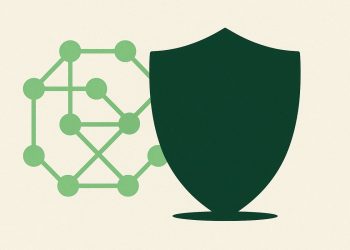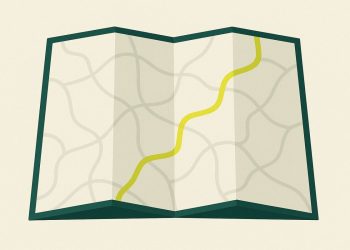Surya is a new open-source AI model created by NASA and IBM to predict dangerous solar flares. Using nine years of sharp solar images, it gives warnings up to two hours ahead – twice as early as before – helping protect satellites and power grids. Surya learns from raw data instead of fixed rules, so it spots warning signs human experts missed. The model is free for anyone to use and improve, which can help keep our technology safe as the Sun gets more active.
What is Surya and how does it improve solar weather forecasting?
Surya is an open-source AI foundation model developed by NASA and IBM for solar weather forecasting. Leveraging nine years of high-resolution solar imagery, Surya predicts M- and X-class solar flares up to two hours in advance, doubling previous warning times and reducing false alarms, thus enhancing protection for satellites and power grids.
NASA and IBM have just pulled the curtain on Surya , the first open-source “foundation” AI model purpose-built for solar-weather forecasting. Handed to the global research community via Hugging Face on 20 Aug 2025, the system is already outperforming legacy flare detectors by 16 % and can warn operators of disruptive M- or X-class flares up to two hours before impact – double the practical lead time available until now.
What makes Surya different?
| Dimension | Legacy/Operational Models | Surya (Aug 2025 release) |
|---|---|---|
| Training data | 1–2 years of low-resolution imagery | 9 consecutive years of 4k × 4k multi-channel images (4096 × 4096 pixels, 10 spectral bands) captured every 12 s by NASA’s Solar Dynamics Observatory |
| Dataset volume | ~1 TB | >10 TB (≈ 10× typical) |
| Model type | Narrow, task-specific CNNs | Foundation model that self-learns solar rotation, magnetic topology and EUV spectra without hand-crafted rules |
| Open code & weights | Rarely available | 100 % open on Hugging Face plus *SuryaBench * evaluation suite |
| Forecast range | 30–60 min lead for flares | 2 h visual prediction + 4-day solar-wind speed outlook |
Early benchmarks show the new model lowering false-alarm rates while catching faster-rising flares that earlier classifiers missed. That matters because even a single unanticipated X-flare can induce geomagnetic currents strong enough to knock out hundreds of high-voltage transformers and cost the global economy an estimated $2.4 trillion over five years, according to a 2025 Lloyd’s–NASA joint risk study.
From pixels to protection
Instead of relying on human-tuned rules about sunspot complexity or magnetic shear, Surya learned the physics from raw pixels. Hidden in the training set were subtle brightenings in 131-Å and 171-Å EUV channels that precede major flares by 60–90 minutes – signatures no operational forecaster had explicitly coded before.
Operators are already folding the model into real-time workflows:
- Satellite fleet managers receive automated two-hour “shield windows,” letting them power down non-critical payloads or rotate sensitive instruments away from the Sun.
- Grid controllers in the North American Electric Reliability Corporation (NERC) test region have begun trialing Surya alerts to pre-stage mobile transformers and switch to backup control rooms.
Why 2025 is the perfect moment
The Sun is climbing toward its 11-year maximum expected in late 2025. Historical records show flare rates can triple during solar max, so the extra hour of warning Surya provides could determine whether satellites stay online and whether GPS-dependent aviation schedules stay intact.
NASA and IBM emphasize that the model is not a black box. Alongside the code drop, the teams released *SuryaBench * – a curated set of annotated events and performance metrics designed to let universities, startups and national weather services fine-tune or extend the system for regional grids, polar aviation corridors or even lunar-surface assets preparing for upcoming Artemis missions.
By open-sourcing both the brain and the ruler, Surya turns a traditionally siloed discipline into a worldwide sandbox – one where better space-weather forecasting is limited only by imagination, not by hidden datasets or proprietary code.
What is Surya and why is it a big deal?
Surya is the first open-source AI foundation model built specifically for solar physics.
– Data scale: trained on 9 years of high-resolution images from NASA’s Solar Dynamics Observatory – about 10× larger than any prior dataset used for this purpose.
– Forecasting window: delivers a 2-hour advance warning of strong (M- or X-class) solar flares.
– Accuracy jump: 16 % better flare-classification scores than the best AI models released before August 2025.
Which real infrastructure now benefits?
- Satellites – operators receive early notice to power-down or re-orient assets before high-energy particles arrive.
- Power grids – utilities reroute currents and bring backup transformers online, cutting the risk of continent-scale blackouts.
- Aviation & GPS – airlines adjust polar routes; navigation services prepare for signal degradation.
How does Surya compare to other space-weather models?
| Model / Tech | Forecast lead-time (flares) | Data freshness | Access |
|---|---|---|---|
| Surya (NASA/IBM, 2025) | Up to 2 h visual prediction | Uses latest SDO stream (every 12 s) | Open-source on Hugging Face |
| NOAA SWPC statistical suite | ~30–60 min | Hourly composites | Public, but not open-source AI |
| ESA Helios AI (2024) | 30–90 min | Moderate-resolution mix | Research-only |
| DeepSun (China, 2024) | 1 h | 5-year SDO subset | Prototype |
Sources: IBM Research blog August 2025, ESA technical brief Sept 2025.
Is the model really free to use?
Yes.
– Code, weights and sample notebooks live on GitHub.
– A curated benchmark pack called SuryaBench (datasets + evaluation scripts) is also released, so any university or start-up can fine-tune Surya for local questions – from predicting EUV brightness over Australia to estimating satellite drag at 400 km.
What’s next?
- Real-time integration into NOAA’s Space Weather Prediction Center dashboards (pilot starts Q2 2026).
- Joint study with power-grid operators across North America & Europe to quantify avoided economic losses – early modelling suggests up to $750 million per major storm could be saved with a two-hour lead.
Cost figures drawn from NASA-IBM joint economic impact memo, 21 August 2025.



















